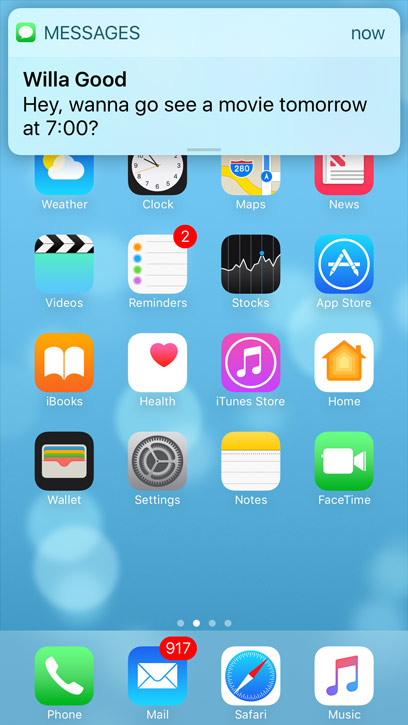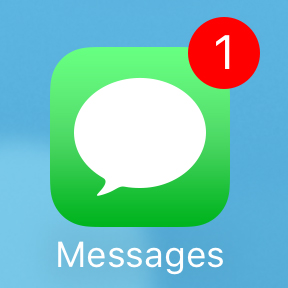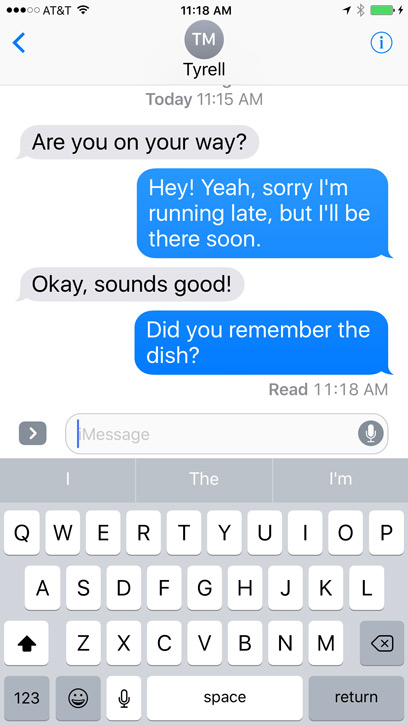iPhone Basics -
Messages

iPhone Basics
Messages


/en/iphonebasics/mail/content/
The Messages app can be used to send instant messages to your contacts. If your friends also use Apple devices, like a Mac or an iPhone, the iMessage feature allows you to send unlimited text messages, photos, videos, and more to these users.

To use the Messages app, you'll need to set up iCloud on your device. You can review our lesson on syncing your iPhone to learn how.
If you receive a new message when you're not in the Messages app, the iPhone will notify you in a few ways:


You can customize your alerts by opening Settings, tapping Notifications, then choosing Messages.
The Messages app works as both as your iMessage client and your regular text-messaging client. Messages sent over iMessage will not count toward your monthly text message limit. This is because iMessage uses cellular data and/or Wi-Fi to send messages. Regular text messages will still count toward your monthly limit.
If your recipient has an Apple device, the message will default to iMessage and the conversation will be blue. If not, the message will be sent as a regular text and the conversation will be green.
Read receipts tell other people when you've read their messages. Read receipts don't appear on your device—they appear on your friends' devices instead, so they can see exactly when you've read their messages. If your friends have read receipts turned on, you can also see when they've viewed your messages. In our example below, we can see that the recipient read our text message at 11:18 AM.

While many people find read receipts helpful, others may prefer not to share this information. To enable or disable read receipts on your device, open Settings, then tap Messages in the left pane. Turn read receipts on or off, depending on your preference.

/en/iphonebasics/calendar/content/